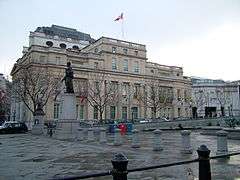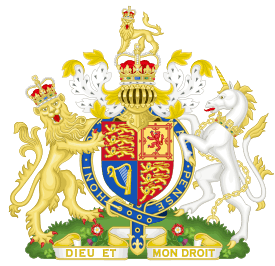Canada–United Kingdom relations
British–Canadian relations are the relations between Canada and the United Kingdom of Great Britain and Northern Ireland, being bilateral relations between their governments and wider uprelations between both countries, which have intimate and frequently-co-operative contact. Both are related by mutual migration, through shared military history, a shared system of government, the English language, the Commonwealth of Nations, and their sharing of the same head of state and monarch. Despite the shared legacy, the two nations have grown apart economically and politically. Britain has not been Canada's largest trading partner since the 19th century. However, both share a defence agreement, NATO, and frequently perform military exercises, together with Canada hosting the largest British Military Base outside the United Kingdom.
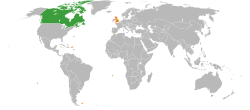 | |
Canada |
United Kingdom |
|---|---|
| Diplomatic mission | |
| Canadian High Commission, London | British High Commission, Ottawa |
| Envoy | |
| High Commissioner Janice Charette | High Commissioner Susan le Jeune d'Allegeershecque |
Country comparison
| Population | 65,110,000 (2016 estimate) | 35,151,728 (2016 census) |
| Area | 243,610 km2 (94,060 sq mi ) | 9,984,670 km2 (3,855,100 sq mi ) |
| Population Density | 255.6/km2 (662.0/sq mi) | 3.92/km2 (10.2/sq mi) |
| Capital | London | Ottawa |
| Largest City | London – 8,673,713 (13,879,757 Metro London) | Toronto – 2,731,571 (5,928,040 Metro Toronto) |
| Government | Unitary[1] parliamentary constitutional monarchy | Federal[1] parliamentary constitutional monarchy |
| Inaugural Head of Government | Robert Walpole | John A. Macdonald |
| Current Head of Government | Boris Johnson | Justin Trudeau |
| Official language | English (de facto) | English; French |
| Main religions | 59.3% Protestantism Christianity, Roman Catholicism, 25.1% Non-Religious, 7.2% Unstated, 4.8% Islam, 1.5% Hinduism, 0.8% Sikhism, 0.5% Judaism, 0.4% Buddhism | 67.2% Christianity, 23.9% Non-Religious, 3.2% Islam, 1.5% Hinduism, 1.4% Sikhism, 1.1% Buddhism, 1.0% Judaism |
| Ethnic groups | 87% White (81.9% White British), 7% Asian, 3% Black, 2% Mixed Race, 1% Others (2011 Census) | 72.9% White, 17.7% Asian, 4.9% Aboriginal, 4.1% Caribbean and Latin American, 3.1% African, 0.2% Oceanian (2016 Census) |
History
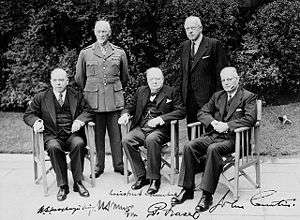
The longstanding relationship between the United Kingdom and Canada formally began in 1867, when the Canadian Confederation federated the North American British crown colonies of the Province of Canada, Province of New Brunswick, and the Province of Nova Scotia. Canada was formed as a dominion of the British Empire.
The history of relations between Canada and Britain, well into the 20th century, is really the story of Canada's slow evolution towards full sovereignty.
British Empire
In 1759, Britain conquered New France and, after the Treaty of Paris (1763), began to populate formerly-French Canada with English-speaking settlers. British governors ruled the new territories absolutely until the Constitutional Act of 1791, which created the first Canadian legislatures. The weak bodies were still inferior to the governors until the granting of responsible government in 1848. With their new powers, the colonies chose to federate in 1867, creating a new state, Canada, with the new title of dominion.
The constitution of the new Canadian federation left foreign affairs to the Imperial Parliament, in Westminster, but the leaders of the federal parliament, in Ottawa, soon developed their own viewpoints on some issues, notably relations between the British Empire and the United States. Stable relations and secure trade with the United States were becoming increasingly vital to Canada, so much so that historians have said that Canada's early diplomacy constituted a "North Atlantic triangle".
Most of Canada's early attempts at diplomacy necessarily involved the "mother country." Canada's first (informal) diplomatic officer was Sir John Rose, who was sent to London by Canadian Prime Minister John A. Macdonald. George Brown was later dispatched to Washington by Prime Minister Alexander Mackenzie to influence British-American trade talks. The British government desired to formalise Canada's representation abroad, rather than deal with so many informal lobbyists and so in 1880, Alexander Tilloch Galt became the first High Commissioner sent from a dominion to Britain.
When it came time to respond to imperial conflicts, Canada maintained a low profile, especially during the Sudan Campaign. When Britain sided mostly with the United States during the Alaska boundary dispute, that marked a low point in pro-British sentiment in Canada. By the time of the Boer War, however, Canadians volunteered to fight for the empire in large numbers despite the lukewarm support of the Canadian government of Wilfrid Laurier, the first French-Catholic prime minister.
Economically, Canadian governments were interested in free trade with the United States, but since that was difficult to negotiate and politically divisive, they became leading advocates of Imperial Preference, which met with limited enthusiasm in Britain.
World Wars

At the outbreak of World War I, the Canadian government and millions of Canadian volunteers enthusiastically joined Britain's side, but the sacrifices of the war and the fact they were made in the name of the British Empire caused domestic tension in Canada and awakened a budding nationalism in Canadians. At the Paris Peace Conference, Canada demanded the right to sign treaties without British permission and to join the League of Nations. By the 1920s, Canada was taking a more independent stance on world affairs.
In 1926, the Balfour Declaration had Britain declare that it would no longer legislate for the dominions, which they were now fully-independent states with the right to conduct their own foreign affairs. That was later formalised by the Statute of Westminster 1931.
Loyalty to Britain still existed, however, and during the darkest days of World War II for Britain, after the fall of France and before the entry of the Soviet Union and the United States as allies, Canada was Britain's main ally in the North Atlantic and a major source of weapons and food.
After the destruction that Germany had inflicted on Europe during the war, Canada's relative economic and military importance was at a peak in the late 1940s, just as Britain's was declining because of military and industrial exhaustion. Both were dwarfed by the new superpowers; however, policymakers in the United States, Britain, and Canada were eager to participate in a lasting military alliance to defend against the Soviet Union, which resulted in the creation of NATO in 1949.
Constitutional independence
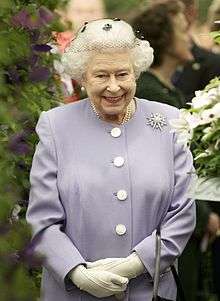
The definitive break in Canada's loyalist foreign policy came during the Suez Crisis of 1956, when the Canadian government flatly rejected calls from the British government for support of the British, French, and Israeli invasion of Egypt. Eventually, Canada helped the three to save face and to extract themselves from a public relations disaster. The Canadian delegation to the United Nations, led by future Prime Minister Lester B. Pearson, proposed a peacekeeping force to separate the two warring sides and so he was awarded the Nobel Peace Prize.
Meanwhile, Canada's legal separation from Britain continued. Until 1946, Britain and Canada shared a common nationality code. The Canadian Citizenship Act 1946 gave Canadians a separate legal nationality from Britain. Canadians could no longer appeal court cases to the Judicial Committee of the Privy Council in London after 1949.
The final constitutional ties between United Kingdom and Canada ended with the passing of the Canada Act 1982. An Act of the British Parliament passed at the request of the Canadian federal government to "patriate" Canada's constitution, ending the necessity for the country to request certain types of amendment to the Constitution of Canada to be made by the British Parliament. The Act also formally ended the "request and consent" provisions of the Statute of Westminster 1931 in relation to Canada whereby the British parliament had a general power to pass laws extending to Canada at the latter's request.
Formal economic relations between the two countries declined after Britain's accession to the European Economic Community in 1973. In both countries, regional economic ties loomed larger than the historical trans-Atlantic ones. In 1988, Canada signed a free trade agreement with the United States, which became the North American Free Trade Agreement (NAFTA) in 1994 with the addition of Mexico. Thus, the two nations are now in separate trade blocs: the European Union and NAFTA, respectively. Nevertheless, Britain remains the fifth largest overall foreign investor in Canada. In turn, Canada is the third largest foreign direct investor in Britain.
Trade and investment
Despite Canada's long-term shift towards proportionally more trade with the United States, Canada–British trade has continued to grow in absolute numbers. Britain is by far Canada's most important commercial partner in Europe and, from a global perspective, ranks third, after the United States and China. In 2010, total bilateral trade reached over 27.1 billion Canadian dollars, and for the last five year, Britain has been Canada's second- largest goods export market. Britain is the third source of foreign direct investment (FDI) in Canada, after the United States and the Netherlands, and Canadian companies invest heavily in Britain. In 2010, the two-way stock of investment stood at almost C$115 billion.[2]
On 9 February 2011, the boards of the London Stock Exchange and the Toronto Stock Exchange agreed to a deal in which both holding companies for the stock exchanges would merge, creating a leading exchange group with the largest number of listed companies in the world, and a combined market capitalisation of £3.7 trillion (C$5.8 trillion). The merger was ultimately cancelled on 29 June 2011 when it became obvious that TMX shareholders would not give the needed two-thirds approval.[3]
Canada and Britain –are working together on negotiations towards a Comprehensive Economic and Trade Agreement (CETA) between Canada and the European Union. The agreement has been ratified by the European Parliament and is provisionally in force since 2017.[2]
In 2013, Mark Carney, Governor of the Bank of Canada, resigned to take up a position as Governor of the Bank of England.
Tourism
In 2004, about 800,000 British residents visited Canada, the second-largest source of tourists in Canada, after the United States. The same year, British visitors spent almost C$1 billion while visiting Canada. Britain was the third international destination for Canadian tourists in 2003, after the United States and Mexico, with some 700,000 visitors spending over C$800 million.[4]
Defence and security
The two countries have a long history of close collaboration in military affairs. Canada fought alongside Britain and its Allies in World War I. Canadians of British descent, the majority of the country, gave widespread support by arguing that Canadians had a duty to fight on behalf of their Motherland. Indeed, Sir Wilfrid Laurier, despite being French-Canadian, spoke for the majority of English-Canadians when he proclaimed: "It is our duty to let Great Britain know and to let the friends and foes of Great Britain know that there is in Canada but one mind and one heart and that all Canadians are behind the Mother Country."[5] It fought with Britain and its allies again in World War II.
Until 1972, the highest military decoration awarded to members of the British and Canadian Armed Forces, was the Victoria Cross, and 81 members of the Canadian military (including those from Newfoundland) and 13 Canadians serving in British units had been awarded the Victoria Cross. In 1993, Canada created its own Victoria Cross.
In modern times, both are members of the AUSCANNZUKUS military alliance including the Five Eyes intelligence-sharing alliance with the United States, Australia, and New Zealand. Both countries are members of NATO and participate in UN peacekeeping operations. Before 2011, both countries' main areas of defense co-operation were in Afghanistan, where they were involved in its dangerous southern provinces. Both have provided air power to the NATO-led mission over Libya. They are still close allies militarily, but it is no longer certain that Canada will follow Britain's lead in international conflicts.
Migration

From the conquest of New France to 1966, Britain remained one of Canada's largest sources of immigrants, usually the largest. Since 1967, when Canadian laws were changed to remove preferences that had been given to Britons and other Europeans, British migration to Canada has continued but at a lower level. When the constituent nations of the UK (England, Wales, Scotland, and Northern Ireland) are taken together, people of British ancestry still form Canada's largest ethnic group. In 2005, there were 579,620 UK-born people living in Canada, making up 1.9% of population of Canada.[6][7]
Historically, Canadians have traveled to Britain to advance their careers or studies to higher levels than could be done at home. Britain acted as the metropole to which Canadians gravitated, but that function has largely been reduced as the Canadian economy and institutions have developed. The Office for National Statistics estimates that in 2009, 82,000 Canadian-born people were living in Britain.[8] In 2012, that was the third largest community in the Canadian diaspora, after Canadians in the United States, and Canadians in Hong Kong.
In recent years, there has been growing support for the idea of freedom of movement between Britain, Canada, Australia, and New Zealand, with citizens able to live and work in any of the four countries, like the Trans-Tasman Travel Arrangement between Australia and New Zealand.[9][10]
Twinnings
.svg.png)
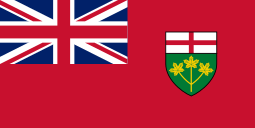
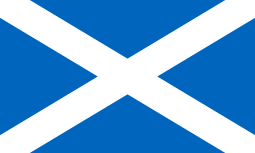






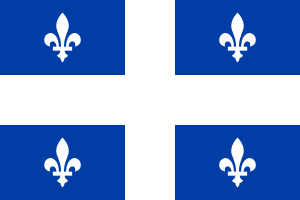



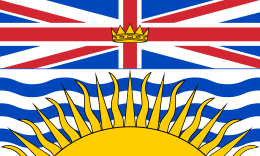

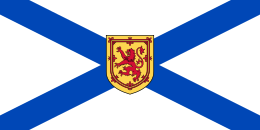





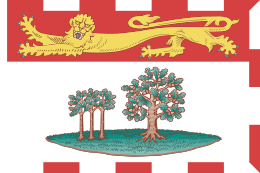


Diplomacy
The contemporary political relationship between London and Ottawa is underpinned by a robust bilateral dialogue at the head-of-government, ministerial and senior officials levels. As Commonwealth realms, the two countries share a monarch, Queen Elizabeth II, and are both active members within the Commonwealth of Nations. In 2011, British Prime Minister David Cameron gave a joint address to the Canadian Parliament, and in 2013, Canadian Prime Minister Stephen Harper addressed both Houses of the British Parliament.[11][12]
Canada maintains a High Commission in London. The United Kingdom, in turn, maintains a High Commission in Ottawa, along with Consulates-General in Toronto, Montreal, Calgary, and Vancouver. In recent years, Canada has sought closer Commonwealth cooperation, with the announcement in 2012 of joint diplomatic missions with the UK and of the intention of extending the scheme to include Australia and New Zealand, both of which share a head of state with Canada. In September 2012, Canada and the United Kingdom signed a Memorandum of Understanding on diplomatic co-operation, which promotes the co-location of embassies, the joint provision of consular services, and common crisis response.[13] The project has been criticised by some Canadian politicians as giving the appearance of a common foreign policy and is seen by many in the United Kingdom as an alternative and counterweight to EU integration.
Quotes
- Canada's future first prime minister, Sir John A. Macdonald, speaking in 1865, hoped that, if the Canadian colonies created a new federation, then Britain and Canada would have "a healthy and cordial alliance. Instead of looking upon us as a merely dependent colony, Britain will have in us a friendly nation, a subordinate, but still powerful people to stand by her in North America in peace or in war."[14]
- Speaking many years later at the beginning of the 1891 election (fought mostly over Canadian free trade with the United States), Macdonald said on February 3, 1891: "As for myself, my course is clear. A British subject I was born; a British subject I will die. With my utmost effort, with my latest breath, will I oppose the 'veiled treason' which attempts, by sordid means and mercenary proffers, to lure our people from their allegiance."[15]
See also
- High Commission of Canada in London
- High Commission of the United Kingdom in Ottawa
- List of High Commissioners from the United Kingdom to Canada
- List of Canadian High Commissioners to the United Kingdom
- Canada–European Union relations
- Comprehensive Economic and Trade Agreement
References
- "Constitutional law - Classifying states as federal or unitary". Encyclopedia Britannica. Retrieved 17 June 2020.
- "Commercial and Economic Relations". Canadian High Commission. Archived from the original on 28 April 2018. Retrieved 16 March 2015.
- Flavelle, Dana (29 June 2011). "Toronto-London stock exchange merger terminated" – via Toronto Star.
- http://www.international.gc.ca/canada-europa/united_kingdom/can_UK-en.asp Canadian High Commission in London
- Robert Borden (1969). Robert Laird Borden: His Memoirs. McGill-Queen's Press. p. 216. ISBN 978-0-7735-6055-0.
- "Place of birth for the immigrant population by period of immigration, 2006 counts and percentage distribution, for Canada, provinces and territories - 20% sample data". www12.statcan.gc.ca.
- "Population by immigrant status and period of immigration, 2006 counts, for Canada, provinces and territories - 20% sample data". www12.statcan.gc.ca.
- "Estimated population resident in the United Kingdom, by foreign country of birth (Table 1.3)". Office for National Statistics. September 2009. Archived from the original on 14 November 2010. Retrieved 8 July 2010.
- "Australians and New Zealanders should be free to live and work in UK, report says". theguardian.com. Retrieved 16 March 2015.
- "Commonwealth Freedom of Movement Organisation". CFMO. Retrieved 16 March 2015.
- "PM gives speech at Canadian Parliament". Gov.uk. Retrieved 16 March 2015.
- "Canadian PM Stephen Harper visits UK Parliament". parliament.uk. Retrieved 16 March 2015.
- "UK to share embassy premises with 'first cousins' Canada". theguardian.com. Retrieved 16 March 2015.
- Foreign Affairs and International Trade Canada – Canada and the World: A History – 1867 – 1896: Forging a Nation Archived 7 April 2008 at the Wayback Machine
- Histor!ca "Election of 1891: A Question of Loyalty", James Marsh.
Further reading
- Buckner, Phillip Alfred. The transition to responsible government: British policy in British North America, 1815-1850 (1985).
- Jasanoff, Maya. Liberty’s Exiles: The Loss of America and the Remaking of the British Empire (2011).
- Kaufman, Will, and Heidi Slettedahl Macpherson, eds. Britain and the Americas: Culture, Politics, and History (3 vol 2005), 1157pp; encyclopedic coverage.
- Lyon, Peter. Britain and Canada: Survey of a Changing Relationship (1976)
- Martin, Ged. "Attacking the Durham Myth: Seventeen Years On." Journal of Canadian Studies 25.1 (1990): 39-59.
- Martin, Ged. Britain and the Origins of Canadian Confederation, 1837-67 (2001).
- Messamore, Barbara Jane. Canada's Governors General, 1847-1878: Biography and Constitutional Evolution (U of Toronto Press, 2006).
- Smith, Andrew. "Patriotism, self-interest and the ‘Empire effect’: Britishness and British decisions to invest in Canada, 1867–1914." Journal of Imperial and Commonwealth History 41.1 (2013): 59-80.
External links
- Government
- Visit Britain the British Tourist Board's Canadian site
- British High Commission The British High Commission in Ottawa
- Canadian High Commission Canadian High Commission in London
